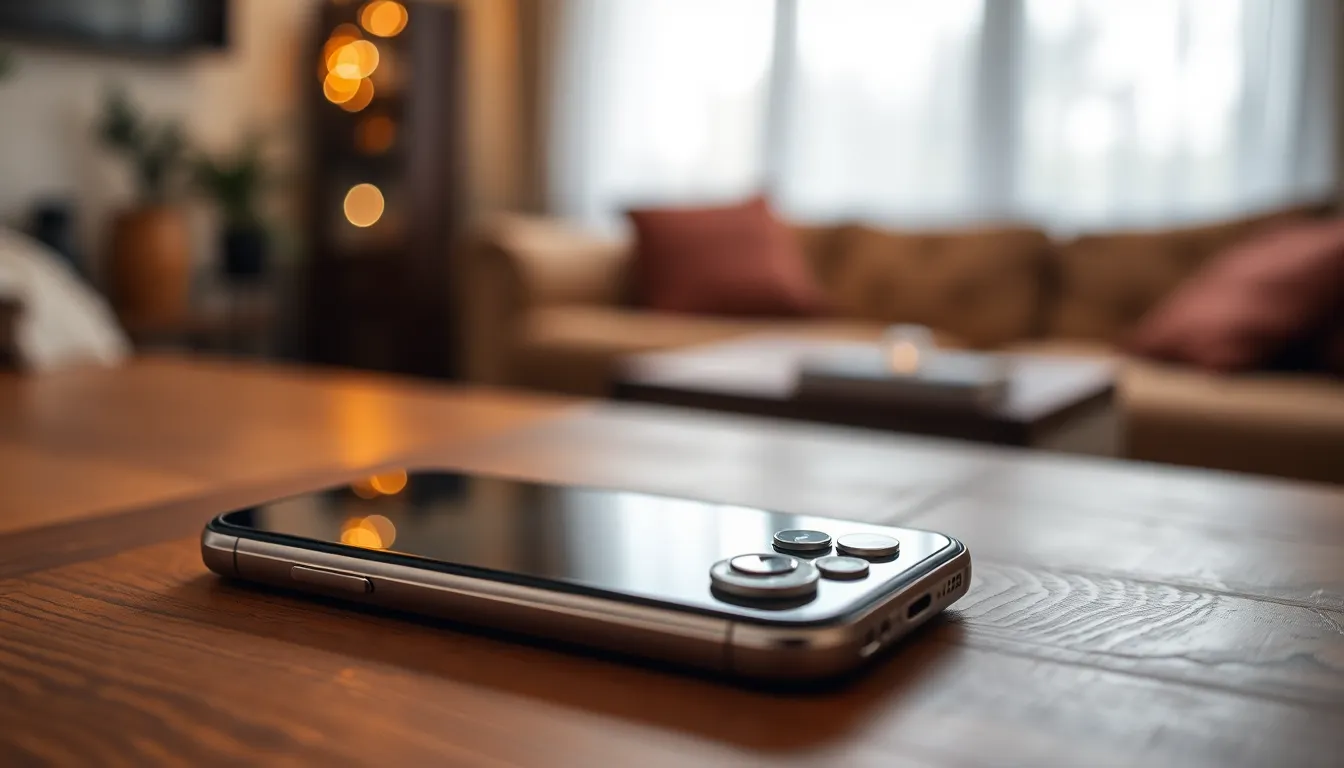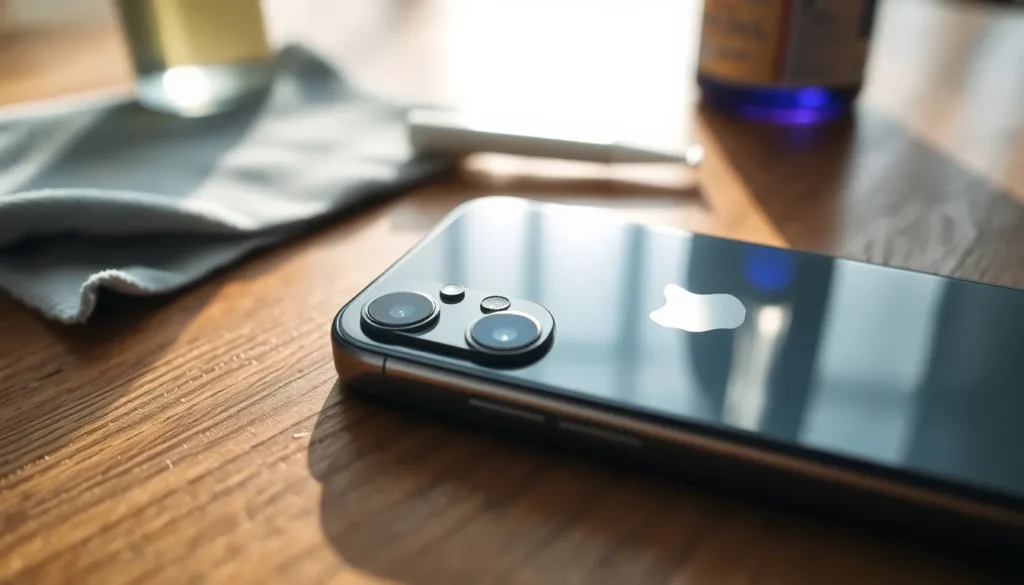Table of Contents
TogglePicture this: you’re ready to capture that perfect moment, but your iPhone’s back camera decides it’s on a break. Frustrating, right? Whether it’s a spontaneous selfie or a stunning sunset, a malfunctioning camera can turn a picture-perfect day into a pixelated disaster.
Common Reasons for Camera Malfunction
Several factors can contribute to an iPhone’s back camera malfunctioning. Identifying these issues aids in resolving the problem quickly.
Software Issues
Software problems frequently cause camera malfunctions. An operating system glitch can interfere with camera functionality. Often, outdated software leads to these complications; keeping the iPhone updated reduces risks associated with bugs. Restarting the device often remedies temporary software issues, restoring camera performance. Background apps might conflict and disrupt camera operation. Closing these apps can help reclaim functionality. Checking for recent app updates and uninstalling problematic apps may enhance overall performance.
Hardware Problems
Hardware failures can lead to camera issues as well. Physical damage, such as cracks on the lens, affects image quality significantly. Dust or debris on the camera lens can obstruct the view and cause blurry images. Inspecting the lens for cleanliness is vital. Loose connections inside the device may disrupt the camera’s operation. Professional diagnosis becomes necessary if internal components have sustained damage. Water damage poses another serious risk; moisture can permanently impair the camera’s functionality. Heeding these potential hardware issues helps ensure proper camera performance.
Troubleshooting Steps

Attempting to fix a non-functioning back camera on an iPhone can require a few straightforward actions. Follow these steps to identify and resolve the issue effectively.
Restart Your iPhone
Restarting the device often resolves minor software glitches that affect camera functionality. Hold down the power button until prompted to slide to power off. This simple action refreshes system processes. After powering off, wait a few seconds before turning it back on. Some users report that this step can immediately restore camera access.
Check for Software Updates
Keeping the software current plays a significant role in camera performance. Access the Settings app and navigate to General, then select Software Update. If an update is available, download and install it. Updates often include bug fixes that resolve known issues, enhancing overall device functionality, including the camera. Regular checks prevent potential malfunctions.
Reset All Settings
Resetting all settings can fix underlying issues without deleting personal data. Go to Settings, then tap on General, followed by Reset. Choose Reset All Settings to begin this process. This action restores settings like Wi-Fi passwords and wallpapers to their defaults. Users may find that the camera begins to function normally again after this reset.
When to Seek Professional Help
Experiencing persistent issues with the back camera might require professional intervention. Certain symptoms indicate that seeking expert assistance can prevent further complications.
Visiting an Authorized Service Center
Authorized service centers possess trained technicians who specialize in iPhone repairs. They use genuine parts that ensure optimal performance and maintain device integrity. If physical damage is evident, such as cracks or liquid exposure, visiting one of these centers is advisable. Technicians can conduct thorough diagnostics to pinpoint hardware issues that might escape the user’s attention. Warranty coverage may apply, reducing repair costs or offering free service.
Considering a Device Replacement
Sometimes, repairing an iPhone may not be the most cost-effective solution. If the device exhibits severe, ongoing camera issues after multiple repairs, it might indicate that a replacement is necessary. Newer models often include advanced camera technology that enhances photo quality significantly. Assessing repair costs against the price of a new device can help make an informed decision. Budget constraints and personal preferences play crucial roles in this evaluation.
Preventive Tips for Camera Maintenance
Regular camera maintenance keeps the back camera of an iPhone in optimal condition. Ensure cleanliness by gently wiping the lens with a microfiber cloth to remove smudges or dust. This simple action prevents obstructions that can blur images.
Software updates play a crucial role in camera function. Check for updates regularly to improve performance and security. These updates might fix known issues that could lead to camera malfunctions.
Avoid exposing the iPhone to extreme temperatures. Hot or cold environments can damage internal components, impacting camera performance. Store the device in a protective case to prevent physical damage from drops or impacts.
Using screen protectors can also help. Certain protectors offer additional lens coverage, reducing the risk of scratches or cracks.
Regularly restarting the iPhone clears temporary glitches. Scheduled restarts can aid in maintaining overall device performance and improve camera responsiveness.
Another preventive measure is managing storage. Sufficient free space on the device ensures that the camera operates without unwanted lag or failure to save images.
Monitoring app permissions can contribute to smoother camera functionality. Sometimes, third-party apps interfere with the camera’s operation. Review app permissions and remove unnecessary access.
Taking the time to implement these tips can enhance the longevity and reliability of the back camera.
Addressing a malfunctioning back camera on an iPhone can be a frustrating experience. By understanding the potential causes and implementing the suggested troubleshooting steps, users can often restore functionality quickly. Regular maintenance and updates play a crucial role in preventing future issues.
When problems persist despite these efforts, seeking professional help is essential. Authorized service centers can provide the expertise needed to diagnose and repair hardware issues effectively. Ultimately, staying proactive about camera care can enhance the overall photography experience and ensure users capture those special moments without interruption.




